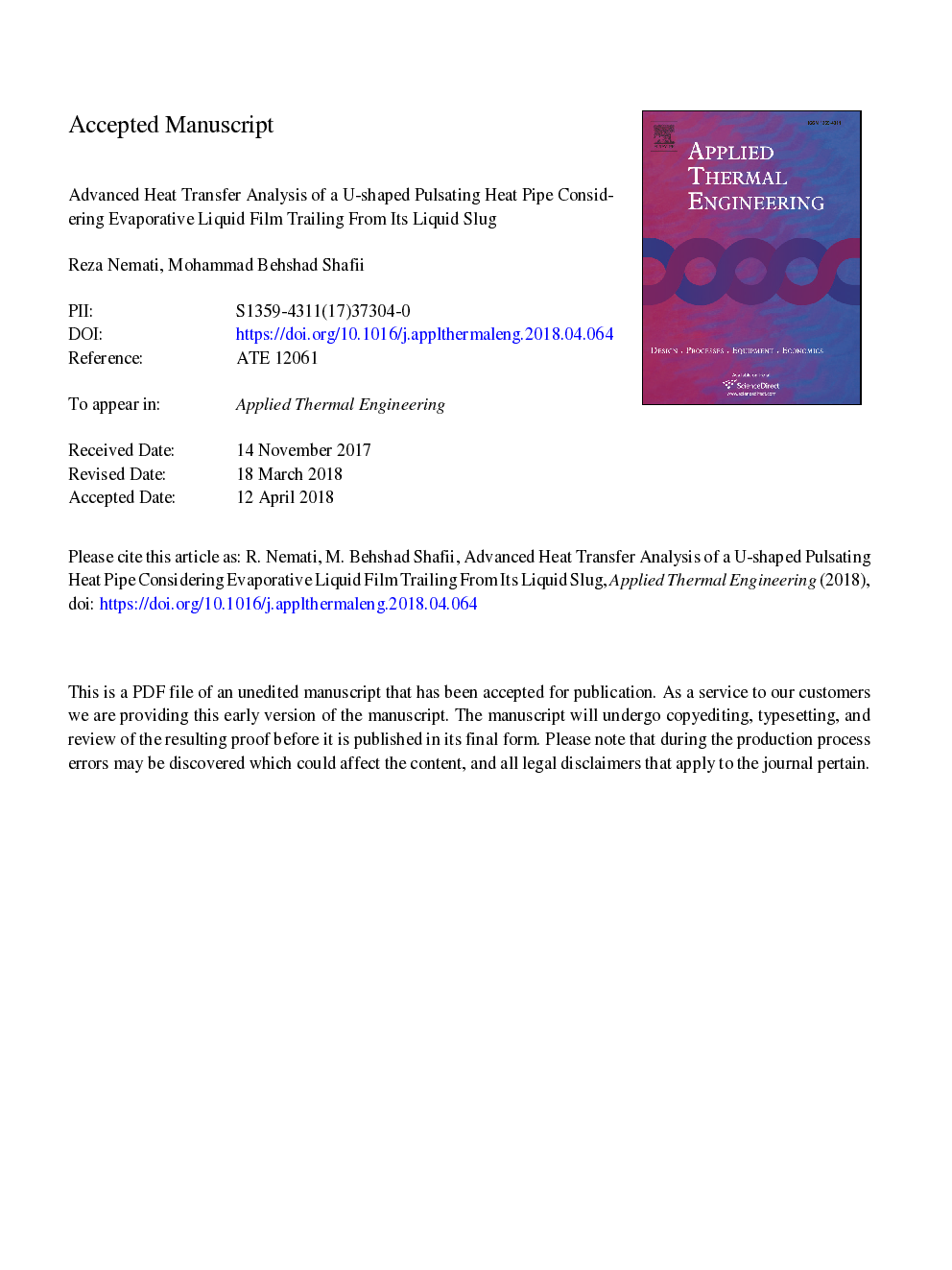| Article ID | Journal | Published Year | Pages | File Type |
|---|---|---|---|---|
| 7045282 | Applied Thermal Engineering | 2018 | 48 Pages |
Abstract
In order to study the heat transfer mechanism and predict the heat transfer capability of a pulsating heat pipe (PHP), a numerical model was used to simulate the oscillating behavior of liquid slug considering liquid film thickness in the evaporator and reduction of liquid film thickness due to evaporation. In this article, thermal performance of an open loop closed end PHP of copper with a diameter of 1â¯mm and various working fluids including water (DW) and ethanol was investigated. The governing equations of mass, momentum, and energy equations were solved for liquid slug and vapor plugs. The results showed that by considering liquid film thickness behind the liquid slug, for both the water (DW) and ethanol, oscillating amplitude of liquid slug increases and its frequency decreases. Under similar conditions, the ethanol-based fluid exhibited larger oscillation amplitude and higher latent heat transfer, as compared to the water-based fluid. For the water and ethanol-based fluids, 98% and 94% of the total heat was transferred as sensible heat through the liquid slug, respectively while the remaining was transferred as latent heat.
Related Topics
Physical Sciences and Engineering
Chemical Engineering
Fluid Flow and Transfer Processes
Authors
Reza Nemati, Mohammad Behshad Shafii,
